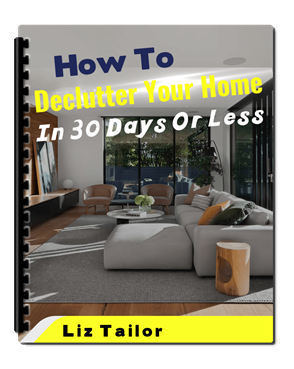Ensuring a safe and secure home environment is essential for seniors living independently.
With a few thoughtful adjustments and considerations, it’s possible to create a living space that supports autonomy while minimizing potential risks.
From reducing fall hazards to improving accessibility, these simple but effective steps can make all the difference.
Read on for practical tips to help you or your loved ones enjoy a safe and comfortable home.
1)) Remove Tripping Hazards
One of the simplest and most effective ways to enhance home safety for seniors is by removing tripping hazards.
Items like loose rugs, electrical cords, and clutter on the floor can pose significant risks, particularly for those with reduced mobility or balance issues.
Ensure pathways are clear and well-lit to make navigating the home easier.
Non-slip mats should replace unsecured rugs, and furniture should be arranged to allow unobstructed movement.
By addressing these potential hazards, you can significantly reduce the likelihood of falls, creating a safer and more navigable living environment.
2)) Install Grab Bars
Installing grab bars in key areas of the home is an effective way to improve safety and provide extra support for seniors.
Bathrooms, in particular, are high-risk areas where grab bars can help prevent slips and falls around the toilet and in the shower or bathtub.
These bars should be securely mounted to the wall at appropriate heights for easy use and should support a senior’s full weight if needed.
Installing grab bars is a straightforward measure that can offer peace of mind and greater confidence for seniors as they move through their daily routines.
3)) Ensure Proper Lighting
Proper lighting is essential for maintaining a safe and comfortable living environment for seniors.
Dimly lit areas can increase the risk of trips and falls, especially in hallways, staircases, and other frequently used spaces.
To ensure adequate illumination, install bright, energy-efficient bulbs and consider adding motion-sensor lights in commonly used pathways for convenience during nighttime.
Nightlights should be placed in bedrooms, bathrooms, and near entrances to improve visibility after dark.
By prioritizing well-lit spaces, you can enhance safety and make daily activities more manageable for seniors living independently.
4)) Use Non-Slip Mats
Using non-slip mats is a simple yet highly effective way to prevent slips and falls, especially in areas prone to moisture like bathrooms and kitchens.
These mats provide added traction and reduce the risk of accidental falls, which can be especially dangerous for seniors.
Choose high-quality, durable mats with rubber backing to ensure they stay securely in place even on smooth surfaces.
Placing non-slip mats in the shower, next to sinks, or near doorways can offer an extra layer of safety.
Incorporating non-slip mats into the home is an easy step toward creating a secure and senior-friendly environment.
5)) Secure Rugs And Carpets
Securing rugs and carpets is a critical step in reducing the risk of trips and falls for seniors living independently.
Loose or curled edges can easily catch on footwear or mobility aids, creating a dangerous tripping hazard.
Use double-sided tape, non-slip rug pads, or adhesive backing to keep rugs securely in place.
If a rug cannot be secured effectively, consider removing it altogether to eliminate the risk.
By taking the time to properly anchor rugs and carpets, you can enhance safety and provide greater peace of mind for seniors navigating their living spaces.
6)) Install Smoke Detectors
Installing smoke detectors throughout the home is a vital safety measure that can alert seniors to potential fire hazards before they become life-threatening.
Place smoke detectors in key areas, such as bedrooms, hallways, and near the kitchen, to ensure comprehensive coverage.
Check that the detectors are working properly by testing them regularly and replacing batteries at least once a year.
Pick models with loud alarms or visual alerts for seniors with hearing impairments.
By equipping the home with reliable smoke detectors, you can provide an added layer of safety and quick response in case of emergencies.
7)) Create An Emergency Contact List
Creating an emergency contact list is a simple yet essential step in ensuring the safety and well-being of seniors living independently.
This list should include important phone numbers such as emergency services, doctors, close family members, and trusted neighbors or friends who can assist in urgent situations.
Make sure the list is prominently displayed and easily accessible, such as on the refrigerator or near the main phone.
For added convenience, you can also program these contacts into a mobile phone or landline speed dial.
Preparing an up-to-date emergency contact list provides reassurance and ensures help is readily available when needed.
8)) Keep Pathways Clear
Keeping pathways clear is a fundamental aspect of creating a safe and accessible home environment for seniors.
Clutter, such as loose cords, furniture, or misplaced items, can obstruct walkways and increase the risk of trips and falls.
Regularly tidying up and rearranging furniture to provide ample space for easy movement can significantly enhance safety.
It's also important to ensure that pathways to frequently used areas, such as the bathroom, bedroom, and kitchen, remain unobstructed day and night.
By prioritizing clear and open pathways, seniors can move throughout their homes with greater confidence and reduced risk of injury.
9)) Store Items Within Easy Reach
Storing items within easy reach is an essential strategy for promoting both safety and convenience in a senior's home.
Frequently used objects like kitchen utensils, medications, and personal care items should be placed on lower shelves or accessible countertops to avoid the need for bending, stretching, or using a step stool.
Consider organizing items systematically to make them easier to locate without unnecessary exertion.
This approach simplifies daily tasks and minimizes physical strain or risk of accidents.
By ensuring that everything needed is easily accessible, seniors can maintain independence and navigate their routines with greater ease.
10)) Install A Shower Chair
Installing a shower chair is an excellent way to enhance safety and comfort for seniors while bathing.
Shower chairs provide a stable seating option, reducing the risk of slipping or falling on wet surfaces.
They are particularly beneficial for seniors with limited mobility or balance issues, as they allow for a safer and more relaxed bathing experience.
Choose a sturdy, nonslip chair that fits securely in the shower or bathtub and ensure it is easily adjustable to accommodate individual needs.
By incorporating a shower chair into the bathroom, seniors can maintain their independence and enjoy a safer bathing routine.
11)) Secure Handrails On Stairs
Securing handrails on stairs is an imperative safety measure to help prevent falls and provide stability for seniors navigating multi-level homes.
Handrails should be installed on both sides of staircases and securely fastened to the wall to ensure they can support weight effectively.
It’s important to check regularly that the handrails are in good condition, with no wobbling or loose screws, and consider adding textured grips for enhanced hold.
Proper lighting along the staircase further improves visibility, reducing the chance of missteps.
By ensuring secure and reliable handrails, seniors can safely use stairs with greater confidence and reduced risk of injury.
12)) Set Water Heater Temperature
Setting the water heater temperature to a safe level is a critical step in preventing burns and ensuring comfort for seniors.
Scalding injuries can occur quickly if water temperatures are too high, which is why experts recommend setting the thermostat to no more than 120°F (49°C).
This temperature is sufficient to prevent bacteria growth while minimizing the risk of accidental burns.
Regularly check and adjust the water heater settings to ensure consistency, and consider installing anti-scald devices on faucets for added protection.
By maintaining a safe water temperature, you can create a safer and more comfortable environment for seniors.
13)) Use A Medical Alert System
Using a medical alert system is a valuable way to provide seniors with immediate access to help during emergencies.
These devices are designed to be worn as pendants, bracelets, or clipped onto clothing, ensuring assistance is just a button press away.
Many modern systems are equipped with advanced features such as fall detection, GPS tracking, and two-way communication, which can be crucial in critical situations.
Choosing a reliable medical alert system tailored to the individual's needs can offer peace of mind for both seniors and their families.
By adopting this technology, seniors can live independently with the assurance that help is always within reach.
14)) Lock Doors And Windows
Locking doors and windows is an essential step in maintaining home security and protecting seniors from potential threats.
Ensuring all entry points are equipped with sturdy locks and are regularly checked for functionality can significantly reduce the risk of unauthorized access.
Consider upgrading to locks with advanced features, such as keyless entry systems or smart locks, which can be easier to use for those with limited dexterity.
Installing window locks or security bars offers an added layer of protection against potential break-ins.
By prioritizing secure doors and windows, seniors can enjoy a safer and more peaceful living environment.
15)) Test Carbon Monoxide Detectors
Testing carbon monoxide detectors regularly is a crucial safety measure for seniors to protect against this odorless and potentially lethal gas.
Detectors should be installed on every level of the home and near sleeping areas to provide timely alerts in case of carbon monoxide buildup.
It is vital to test them at least once a month by pressing the test button to ensure they are functioning properly and replace batteries as needed.
Older detectors should be replaced every 5–7 years to maintain reliability.
By making regular testing a habit, you can safeguard seniors from the dangerous effects of carbon monoxide exposure and ensure a safer living environment.
Conclusion
Promoting safety and independence for seniors requires thoughtful attention to their living environments and daily routines.
By implementing practical measures such as securing handrails, setting appropriate water heater temperatures, and utilizing medical alert systems, seniors can significantly reduce risks and enhance their quality of life.
Simple yet effective adjustments, like ensuring doors and windows are locked and regularly testing carbon monoxide detectors, provide additional layers of protection.
These steps not only safeguard seniors but also offer peace of mind to their families, creating a supportive and secure atmosphere where seniors can thrive independently.
Download Our Free E-book!







